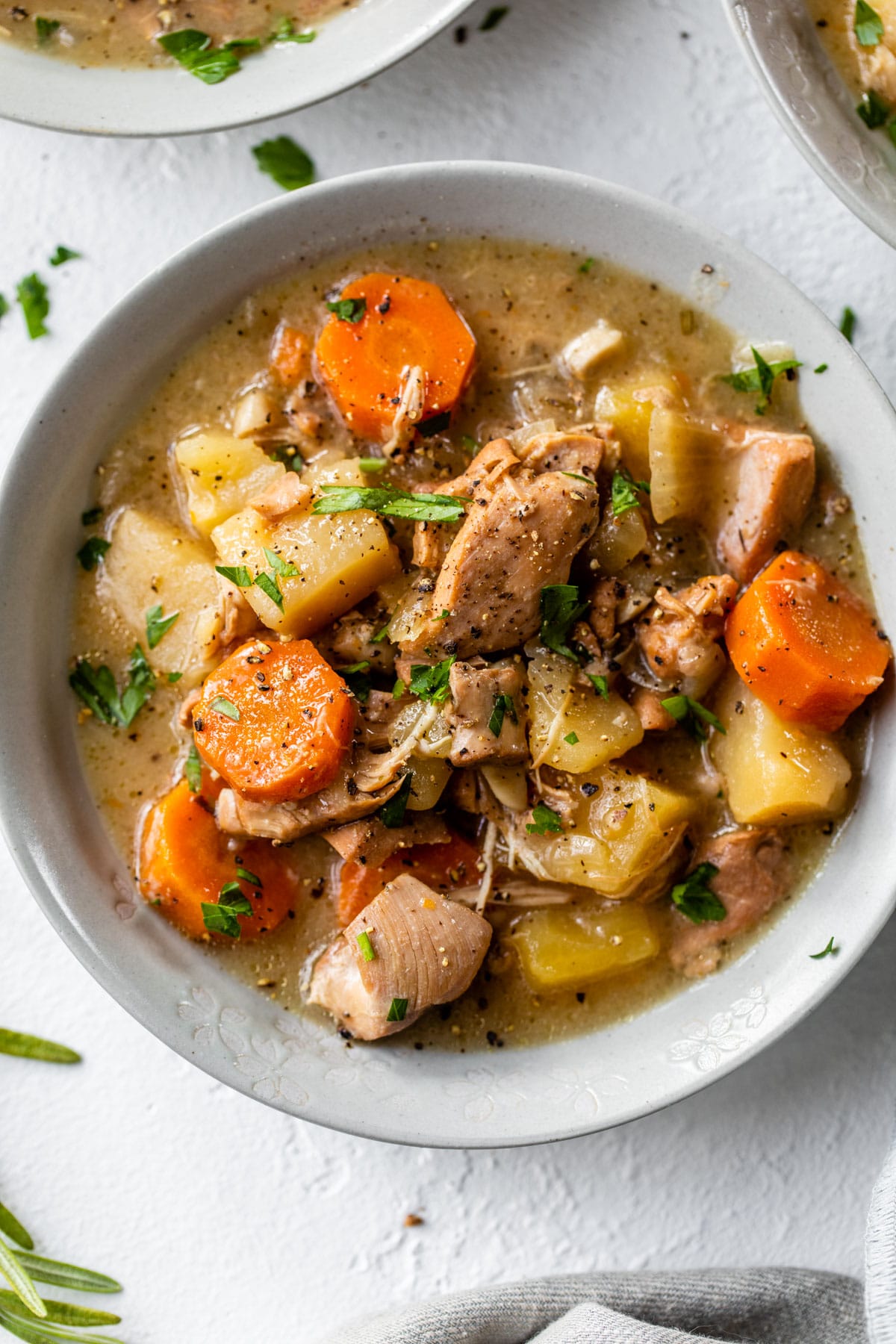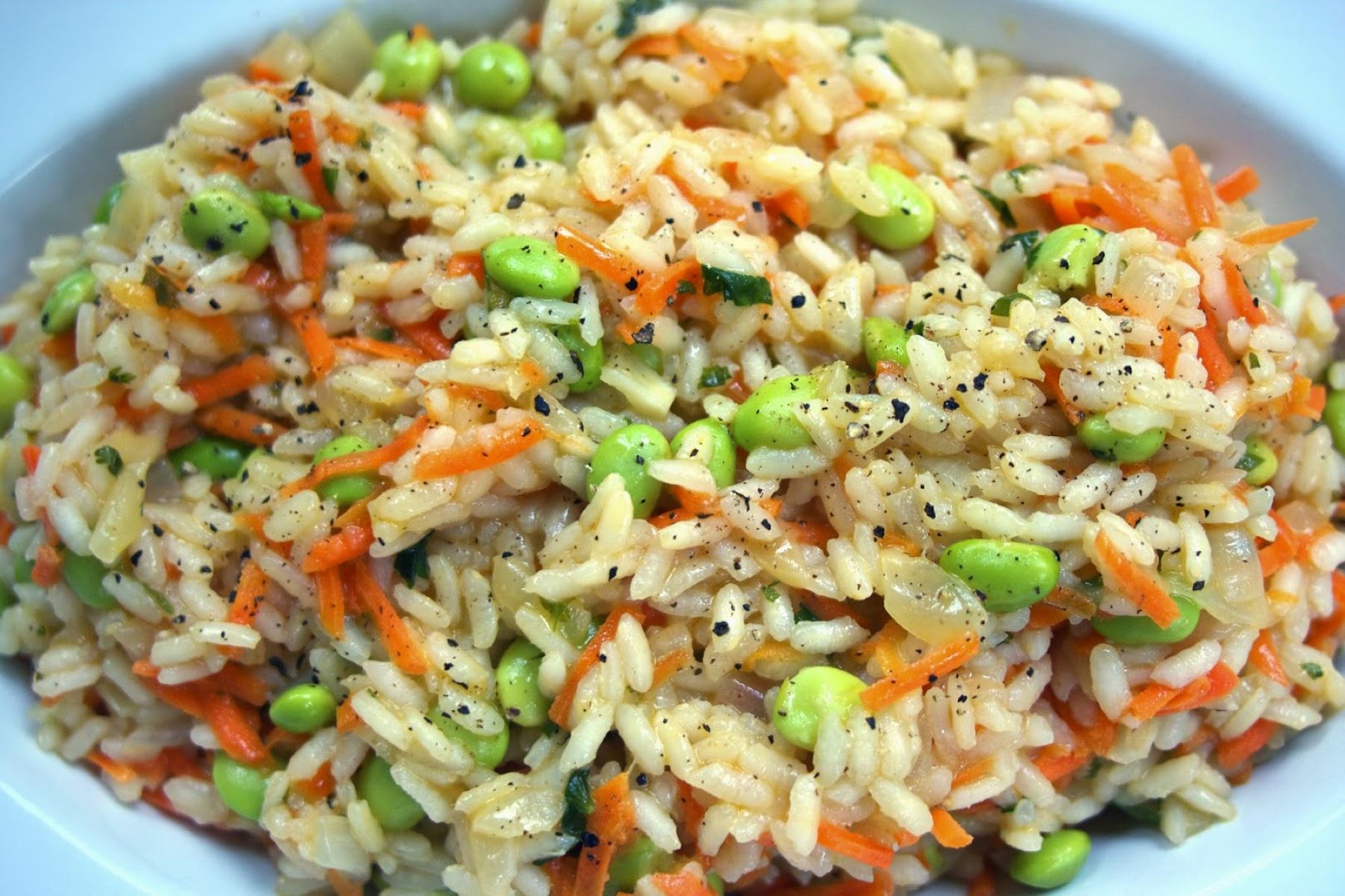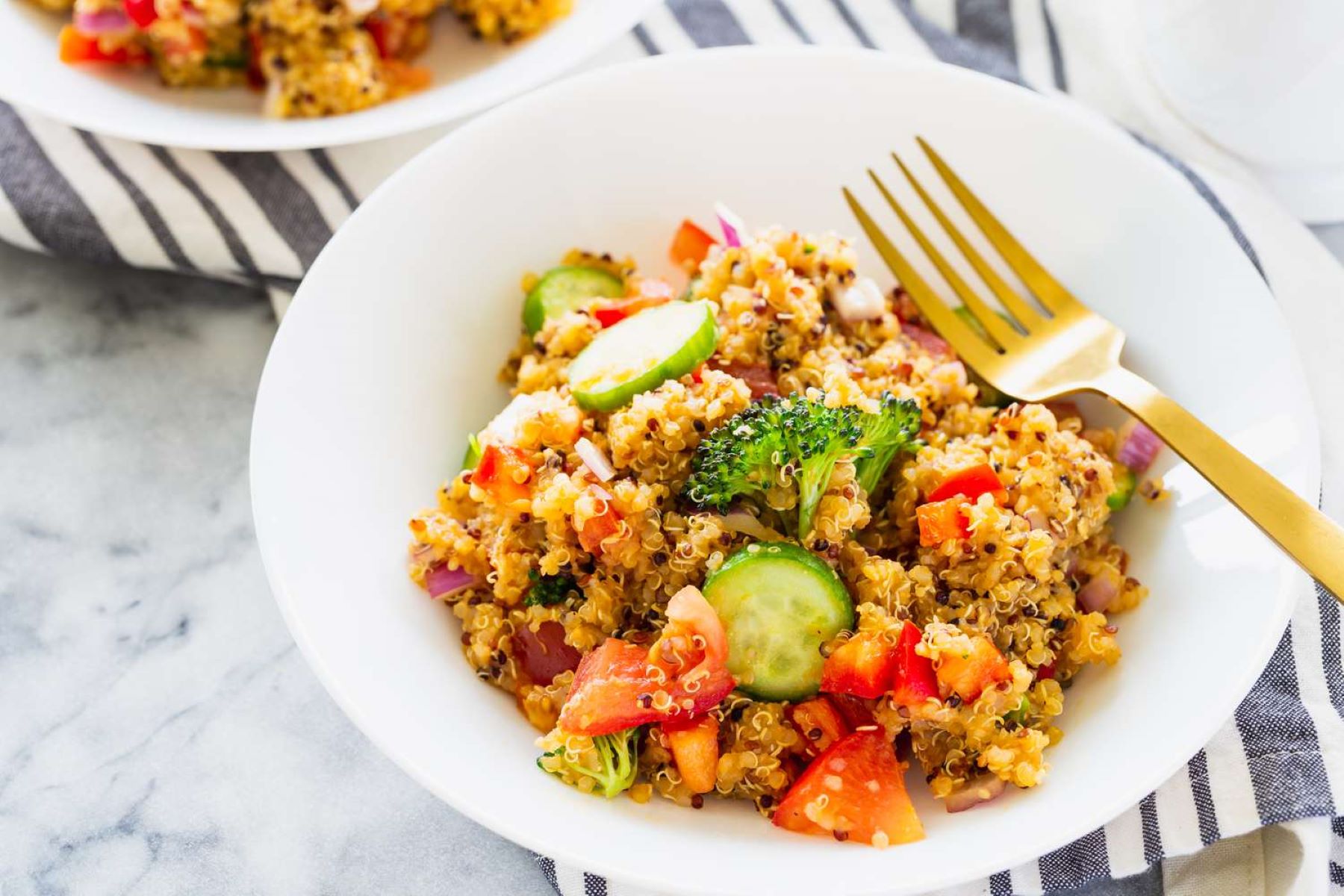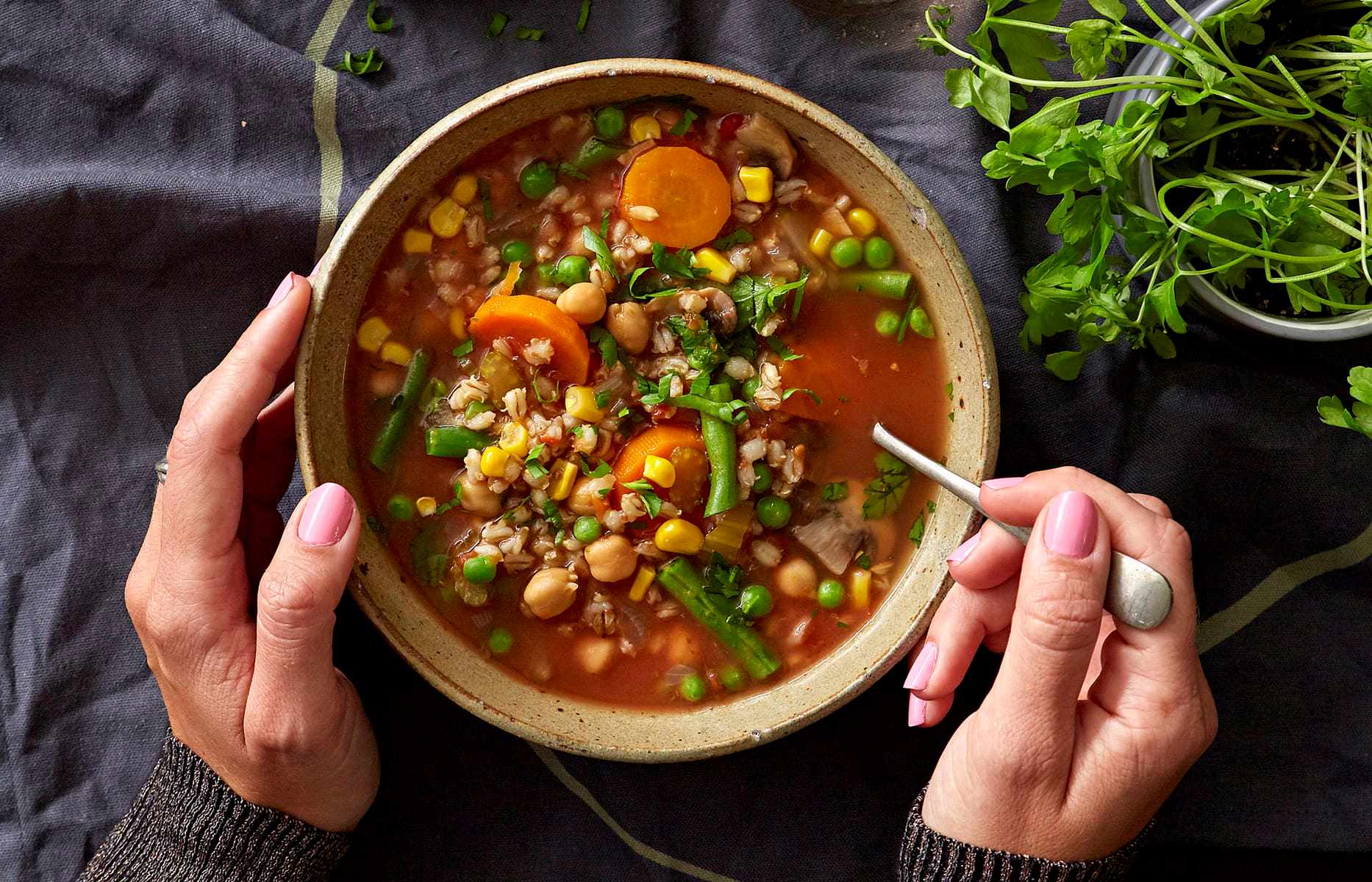Home>Eating>Delicious Vegetable Casserole Briam From Around The World
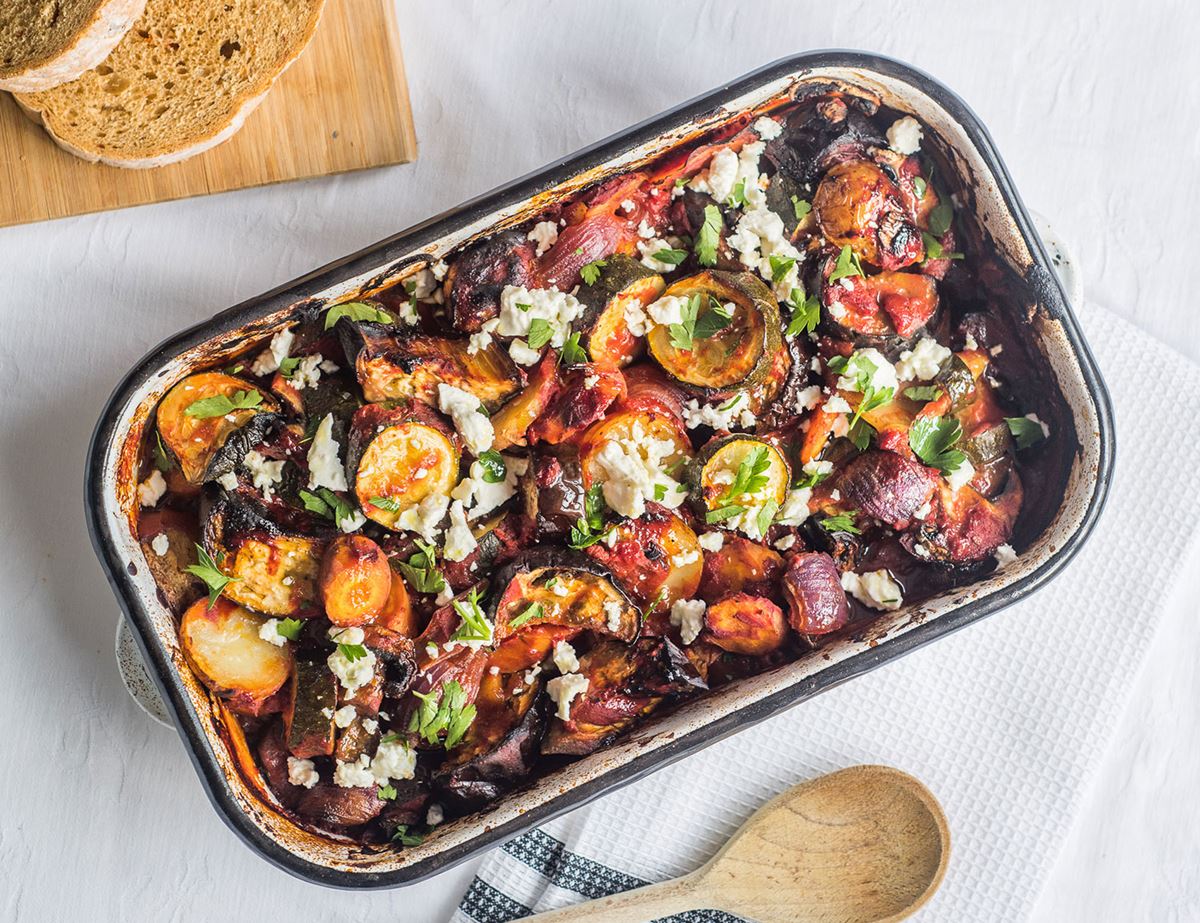

Eating
Delicious Vegetable Casserole Briam From Around The World
Published: February 15, 2024
Indulge in a delightful vegetable casserole Briam, a global culinary delight perfect for those who love eating wholesome and flavorful dishes. Discover the joy of eating with this delectable recipe from around the world.
(Many of the links in this article redirect to a specific reviewed product. Your purchase of these products through affiliate links helps to generate commission for Simplelivingeating.com, at no extra cost. Learn more)
Table of Contents
Introduction
Welcome to the world of culinary delights, where flavors and aromas come together to create unforgettable dining experiences. Today, we embark on a journey to explore the tantalizing dish known as Briam, a delectable vegetable casserole that has captured the hearts and palates of food enthusiasts around the globe.
Briam, also referred to as Tourlou Tourlou, is a traditional Mediterranean dish celebrated for its rich medley of vibrant vegetables, aromatic herbs, and wholesome olive oil. This hearty and nutritious casserole has been cherished for generations, offering a symphony of flavors that reflect the bountiful harvest of the earth.
As we delve into the world of Briam, we will uncover the fascinating history behind this beloved dish, unravel the secrets of its tantalizing ingredients, and embark on a culinary adventure to explore the diverse variations of Briam across different countries. Whether you are a seasoned chef or an aspiring home cook, this article will equip you with the knowledge and inspiration to create a mouthwatering Briam that will delight your senses and elevate your dining experience.
Join us as we embark on a culinary odyssey to discover the essence of Briam, from its humble origins to its global appeal. Get ready to tantalize your taste buds and unleash your creativity in the kitchen as we unravel the art of preparing and savoring this beloved vegetable casserole.
History of Briam
The history of Briam traces back to the sun-kissed lands of the Mediterranean, where the tradition of cultivating and savoring fresh, seasonal produce has been ingrained in the cultural tapestry for centuries. This beloved vegetable casserole has its roots in the rustic kitchens of Greece, where it emerged as a celebration of the region's abundant harvest and a testament to the art of simple yet flavorful cooking.
The origins of Briam can be linked to the traditional Greek dish known as "tourlou tourlou," which translates to "all mixed up" in Greek. This aptly describes the essence of Briam, as it embodies a harmonious blend of assorted vegetables, aromatic herbs, and luscious olive oil. The dish is believed to have evolved as a means of utilizing an array of seasonal vegetables, allowing households to make the most of their bountiful yields.
Historically, Briam has been associated with the concept of "farm-to-table" cooking, where families would gather freshly harvested vegetables from their gardens and transform them into a wholesome and satisfying meal. This practice not only showcased the culinary prowess of utilizing local, seasonal ingredients but also emphasized the importance of sustainability and resourcefulness in the kitchen.
Over time, the popularity of Briam transcended the borders of Greece, making its way into the culinary repertoire of neighboring Mediterranean countries. Each region added its own unique twist to the dish, incorporating local varieties of vegetables and herbs to create distinct regional interpretations of Briam. This culinary evolution transformed Briam into a versatile and adaptable dish, reflecting the diverse culinary heritage of the Mediterranean.
Today, Briam stands as a testament to the time-honored tradition of embracing the natural bounty of the earth and transforming it into a feast for the senses. Its rich history and enduring popularity serve as a reminder of the profound connection between food, culture, and the land, encapsulating the essence of Mediterranean cuisine in every flavorful bite. As we continue our exploration of Briam, let us delve deeper into the vibrant array of ingredients that form the heart and soul of this beloved vegetable casserole.
Ingredients for Vegetable Casserole Briam
The essence of Briam lies in its vibrant medley of fresh, seasonal vegetables, aromatic herbs, and luscious olive oil. Each ingredient plays a pivotal role in creating a harmonious symphony of flavors and textures that define this beloved vegetable casserole. Let's explore the essential components that come together to form the heart and soul of Briam:
1. Fresh Vegetables:
- Tomatoes: Ripe, juicy tomatoes form the flavorful base of Briam, infusing the dish with a luscious sweetness and vibrant color. Whether using Roma, cherry, or heirloom varieties, the succulent tomatoes provide a rich foundation for the casserole.
- Zucchini: Tender zucchini adds a delicate texture and mild, earthy flavor to Briam, complementing the other vegetables with its subtle notes of freshness.
- Eggplant: Velvety eggplant lends a creamy, melt-in-your-mouth texture to the casserole, infusing it with a luxurious richness and depth of flavor.
- Bell Peppers: Colorful bell peppers, whether red, yellow, or green, contribute a delightful sweetness and crispness to Briam, elevating its visual appeal and taste.
2. Aromatic Herbs and Spices:
- Fresh Oregano: Fragrant oregano leaves impart a robust, earthy aroma and a hint of peppery undertones, enhancing the savory profile of Briam.
- Dried Thyme: The subtle, floral notes of dried thyme add a layer of complexity to the dish, harmonizing with the other herbs and vegetables to create a well-rounded flavor profile.
- Garlic: Aromatic garlic cloves infuse Briam with a pungent, savory essence, elevating its overall depth of flavor and adding a delightful kick to each bite.
3. Quality Olive Oil:
- Extra Virgin Olive Oil: The golden elixir of extra virgin olive oil not only serves as the cooking medium for Briam but also imparts a luxurious, fruity undertone to the dish. Its rich, buttery texture and distinct flavor profile elevate the vegetables to new heights, resulting in a sumptuous and indulgent casserole.
4. Seasoning and Enhancements:
- Sea Salt: A pinch of sea salt enhances the natural flavors of the vegetables, balancing their sweetness and adding a touch of savory depth to the casserole.
- Ground Black Pepper: Freshly ground black pepper lends a gentle heat and aromatic warmth to Briam, accentuating its savory notes and providing a subtle kick of spice.
5. Optional Additions:
- Potatoes: Some variations of Briam include tender chunks of potatoes, adding a hearty and satisfying element to the casserole.
- Onions: Sliced onions can contribute a sweet, caramelized flavor and a hint of subtle sharpness to the dish, enhancing its complexity.
These carefully selected ingredients form the cornerstone of Briam, embodying the essence of Mediterranean cuisine and celebrating the natural abundance of the earth. As we proceed to unravel the step-by-step instructions for creating this tantalizing vegetable casserole, let's prepare to embark on a culinary adventure that will delight the senses and inspire the palate.
Step-by-Step Instructions for Making Briam
-
Preparation of Vegetables:
- Begin by preheating the oven to 375°F (190°C) to ensure it is ready for the casserole.
- Wash and dry the tomatoes, zucchini, eggplant, and bell peppers thoroughly. Then, proceed to slice them into uniform, bite-sized pieces, ensuring even cooking and a visually appealing presentation.
- If including potatoes and onions, peel and slice them into similar sizes as the other vegetables for consistency.
-
Layering the Casserole:
- Drizzle a generous amount of extra virgin olive oil onto the bottom of a large baking dish, ensuring a smooth and even coating to prevent sticking.
- Arrange the sliced vegetables in the baking dish, layering them in an overlapping fashion to create a visually stunning array of colors and textures. The medley of tomatoes, zucchini, eggplant, bell peppers, and optional potatoes and onions should form a harmonious tapestry within the dish.
-
Infusion of Flavor:
- Drizzle additional olive oil over the layered vegetables, ensuring that each piece glistens with the golden elixir. This step not only enhances the richness of the casserole but also allows the vegetables to caramelize and develop a sumptuous depth of flavor during the cooking process.
- Sprinkle the fresh oregano leaves, dried thyme, and minced garlic evenly over the vegetables, allowing the aromatic herbs to permeate the dish with their tantalizing fragrance and savory essence.
- Season the Briam with a pinch of sea salt and freshly ground black pepper, ensuring that the flavors are perfectly balanced and harmonized.
-
Baking the Briam:
- Cover the baking dish with aluminum foil, creating a snug seal to lock in the flavors and moisture during the initial phase of baking.
- Place the Briam in the preheated oven and allow it to bake for approximately 45 minutes, allowing the vegetables to tenderize and meld together, creating a symphony of flavors and textures.
-
Unveiling the Culinary Masterpiece:
- After 45 minutes, carefully remove the foil from the baking dish, allowing the Briam to continue baking for an additional 15-20 minutes. This step enables the vegetables to caramelize and develop a tantalizing golden hue, adding visual allure and depth of flavor to the casserole.
- Once the Briam has achieved a luscious caramelization and the vegetables are tender yet vibrant, remove it from the oven and allow it to cool slightly before serving.
-
Serving the Briam:
- Garnish the Briam with a sprig of fresh oregano or a drizzle of extra virgin olive oil to add a final touch of elegance and flavor.
- Serve the vegetable casserole Briam as a standalone delight, accompanied by crusty bread to soak up the savory juices, or as a delightful side dish to complement a variety of main courses.
By following these step-by-step instructions, you will embark on a culinary journey that celebrates the essence of Briam, from its humble origins to its global appeal. Get ready to savor the rich flavors and vibrant colors of this beloved vegetable casserole, as you bring the spirit of the Mediterranean into your own kitchen.
Variations of Briam from Different Countries
The allure of Briam transcends geographical boundaries, inspiring a diverse array of interpretations and adaptations across different countries. Each region infuses its own culinary traditions, local produce, and unique flavor profiles into the beloved vegetable casserole, resulting in a tapestry of variations that celebrate the art of regional cooking. Let's embark on a flavorful journey to explore the captivating variations of Briam from different countries:
Greece:
In its place of origin, Greece, Briam embodies the essence of rustic Mediterranean cooking, showcasing a harmonious blend of tomatoes, zucchini, eggplant, and bell peppers, infused with fragrant oregano, thyme, and garlic. This classic rendition of Briam captures the timeless flavors of the Greek countryside, where the luscious olive oil and sun-ripened vegetables take center stage, creating a symphony of taste and texture.
Turkey:
In Turkey, Briam, known as "Közlenmiş Sebze," embraces a delightful smoky twist, where the vegetables are charred over an open flame before being assembled into a tantalizing casserole. This technique infuses the dish with a distinct smokiness, adding depth and complexity to the flavors while paying homage to the country's rich tradition of open-fire cooking.
Cyprus:
The Cypriot rendition of Briam, referred to as "Turlu," introduces a captivating fusion of Mediterranean and Middle Eastern influences. This variation often incorporates the addition of chickpeas, creating a hearty and protein-rich dimension to the casserole. The inclusion of cinnamon and cumin further distinguishes Cypriot Turlu, infusing it with warm, aromatic notes that elevate the dish to new culinary heights.
France:
In the southern regions of France, Briam, known as "Ratatouille," takes on a refined and elegant persona, reflecting the country's culinary finesse. Ratatouille showcases a meticulous arrangement of thinly sliced vegetables, including tomatoes, zucchini, and eggplant, layered with precision and finesse. Herbes de Provence, a fragrant blend of dried herbs, imparts a quintessentially French touch, elevating the dish with its aromatic bouquet.
Middle East:
Across the Middle East, Briam finds its counterpart in dishes such as "Bamia" and "Tajine," where the inclusion of regional spices and herbs adds a captivating depth of flavor. The use of ingredients like sumac, za'atar, and preserved lemons infuses these variations with a tantalizing complexity, offering a delightful fusion of Mediterranean and Middle Eastern culinary traditions.
From the sun-drenched coasts of Greece to the bustling markets of the Middle East, the variations of Briam from different countries reflect the rich tapestry of culinary diversity and regional ingenuity. Each rendition pays homage to the vibrant flavors of its respective locale, inviting us to savor the boundless creativity and cultural heritage encapsulated within this beloved vegetable casserole.
Serving and Pairing Suggestions
Serving the vegetable casserole Briam is an opportunity to create a memorable dining experience that celebrates the vibrant flavors and rustic charm of Mediterranean cuisine. Whether presented as a standalone delight or paired with complementary accompaniments, Briam offers a versatile canvas for culinary creativity and gastronomic exploration. Here are some serving and pairing suggestions to elevate the enjoyment of this beloved dish:
Standalone Delight:
When serving Briam as a standalone dish, allow its rich medley of flavors and textures to take center stage. Present the casserole in a generously sized serving dish, allowing guests to admire the vibrant array of vegetables and aromatic herbs. A garnish of fresh oregano or a drizzle of extra virgin olive oil adds a final touch of elegance and flavor, enhancing the visual appeal and inviting guests to indulge in the tantalizing aromas.
Read more: Discover The Exquisite Delicacy Of Belgium Mussels – A Must-Try Dish From Around The World
Accompaniments:
Pairing Briam with crusty bread is a delightful way to soak up the savory juices and savor the robust flavors of the casserole. Whether it's a rustic baguette, artisanal sourdough, or a traditional Mediterranean flatbread, the hearty texture of the bread complements the lusciousness of Briam, creating a harmonious interplay of tastes and mouthfeel.
Main Course Complement:
As a versatile dish, Briam serves as an excellent accompaniment to a variety of main courses. Its vibrant and robust flavors make it an ideal partner for grilled or roasted meats, such as lamb chops, chicken kebabs, or marinated fish. The lightness of the vegetable casserole balances the richness of the main course, creating a well-rounded and satisfying dining experience.
Wine Pairing:
When it comes to wine pairing, Briam harmonizes beautifully with a range of varietals that complement its Mediterranean essence. A crisp and refreshing white wine, such as a Greek Assyrtiko or a French Sancerre, accentuates the bright, herbaceous notes of the dish. For those who prefer red wine, a medium-bodied option like a Spanish Rioja or an Italian Chianti enhances the savory elements of Briam while offering a delightful contrast to its vibrant vegetable flavors.
Culinary Creativity:
Embrace culinary creativity by incorporating Briam into a mezze-style spread, alongside an assortment of Mediterranean appetizers and dips. From creamy hummus and smoky baba ghanoush to tangy tzatziki and briny olives, the vegetable casserole Briam adds a colorful and inviting dimension to the array of flavors, inviting guests to embark on a culinary journey through the Mediterranean.
By considering these serving and pairing suggestions, you can transform the act of enjoying Briam into a memorable and immersive dining experience. Whether shared with loved ones or savored in solitude, the vegetable casserole Briam invites you to savor the essence of Mediterranean cuisine and create moments of culinary delight that linger in the memory long after the last bite.
Read more: Blueberry From Around My French Table
Conclusion
In conclusion, the journey through the world of Briam has been a captivating exploration of culinary heritage, vibrant flavors, and the enduring appeal of Mediterranean cuisine. From its humble origins in the rustic kitchens of Greece to its diverse interpretations across different countries, Briam stands as a testament to the timeless art of celebrating seasonal produce and transforming it into a symphony of taste and texture.
As we reflect on the rich history and global resonance of Briam, it becomes evident that this beloved vegetable casserole transcends mere sustenance; it embodies a profound connection to the land, a celebration of abundance, and a testament to the ingenuity of traditional cooking practices. The harmonious blend of fresh vegetables, aromatic herbs, and luscious olive oil encapsulates the essence of Mediterranean culinary philosophy, where simplicity and quality converge to create culinary masterpieces.
The journey through the preparation of Briam, from selecting the freshest ingredients to layering them with care and infusing them with aromatic herbs, has been a testament to the artistry and mindfulness that define the culinary process. Each step in the creation of Briam is a homage to the traditions and techniques that have been passed down through generations, preserving the authenticity and integrity of this beloved dish.
Furthermore, the exploration of Briam's variations from different countries has unveiled the remarkable diversity and adaptability of this vegetable casserole. Whether in Greece, Turkey, Cyprus, France, or the Middle East, each rendition of Briam reflects the unique culinary identity and regional influences, inviting us to savor the kaleidoscope of flavors and cultural nuances encapsulated within this timeless dish.
As we consider the serving and pairing suggestions, we are reminded that Briam is not merely a dish; it is an invitation to create memorable dining experiences, to savor the richness of Mediterranean flavors, and to celebrate the conviviality of sharing food with loved ones. Whether enjoyed as a standalone delight, paired with complementary accompaniments, or integrated into a culinary tableau, Briam offers a versatile canvas for creativity and gastronomic exploration.
In essence, the journey through the world of Briam has been a celebration of tradition, innovation, and the enduring allure of Mediterranean cuisine. It has invited us to embrace the simplicity of seasonal ingredients, the artistry of culinary techniques, and the joy of savoring wholesome, flavorful dishes that nourish both body and soul. As we bid adieu to this culinary odyssey, may the spirit of Briam continue to inspire us to embrace the beauty of simplicity, the richness of tradition, and the boundless creativity that awaits in the kitchen.




